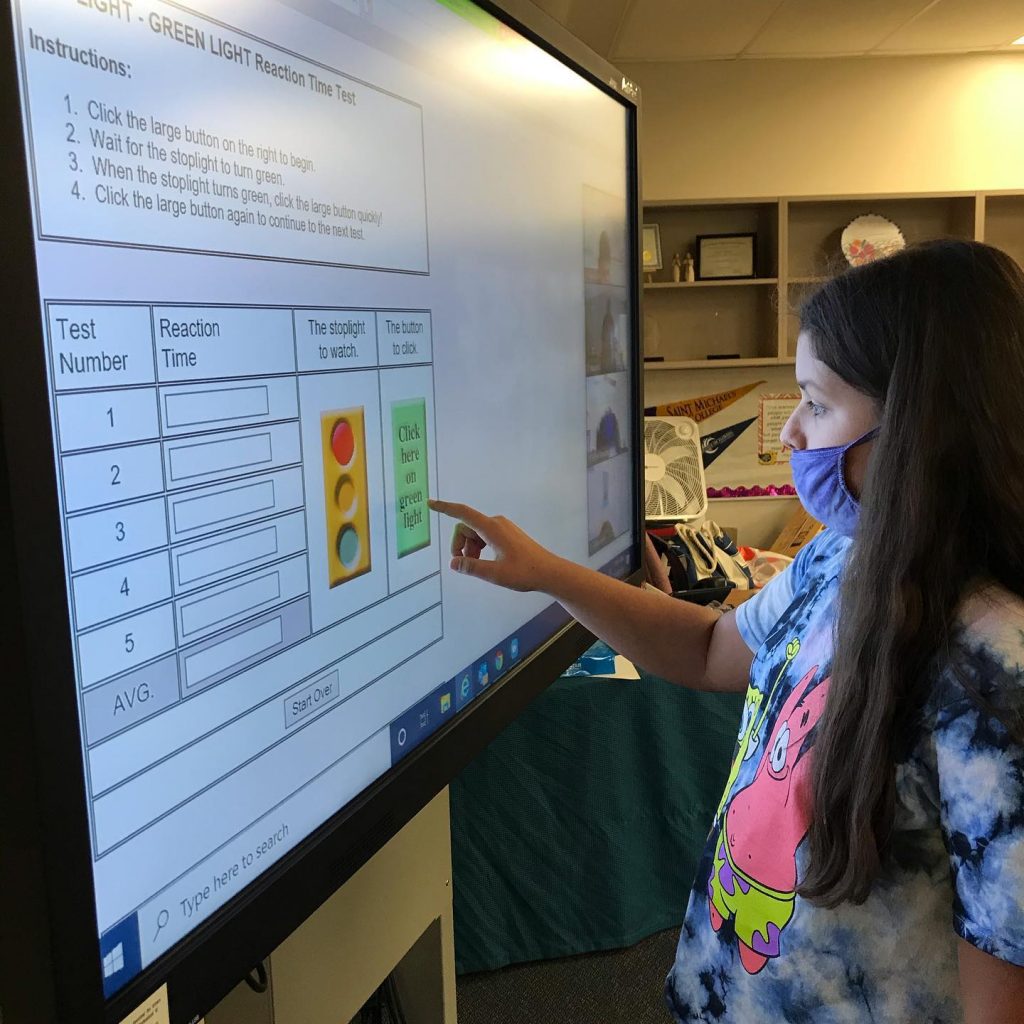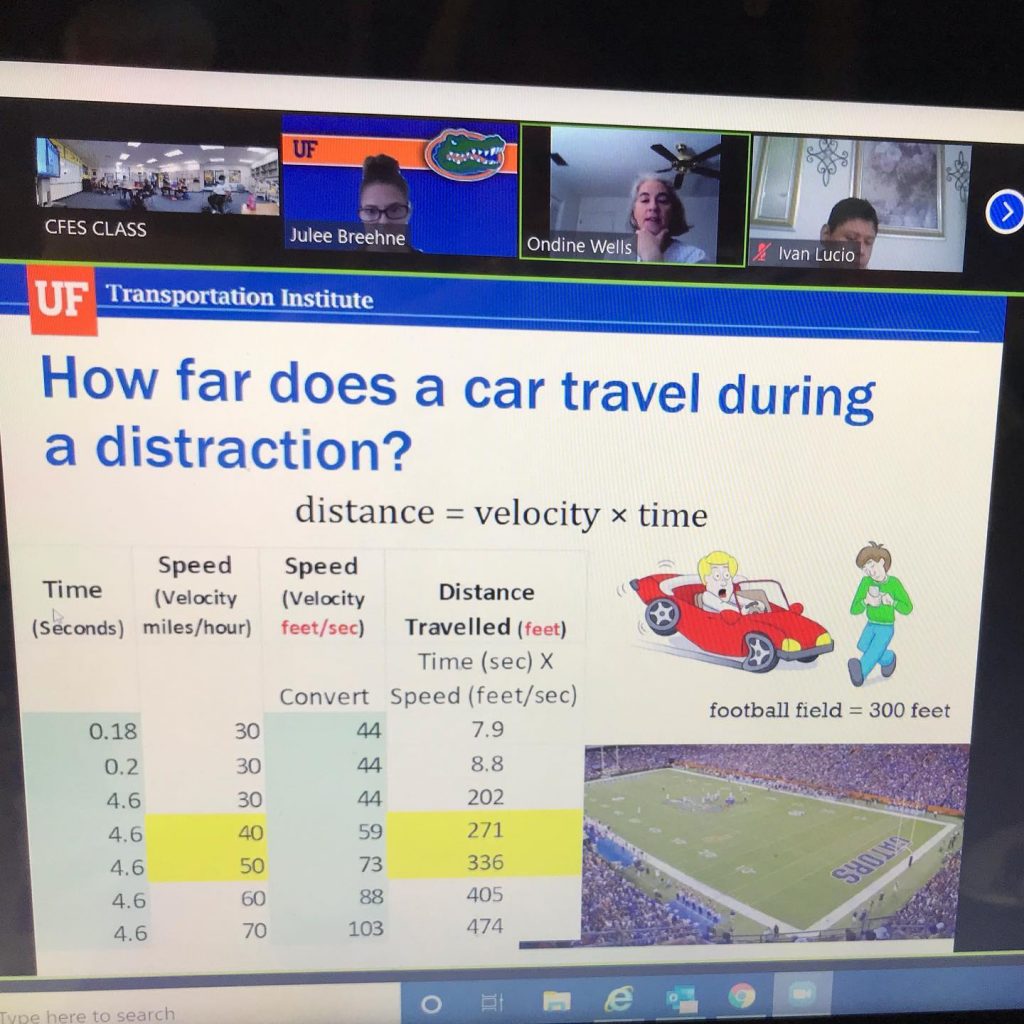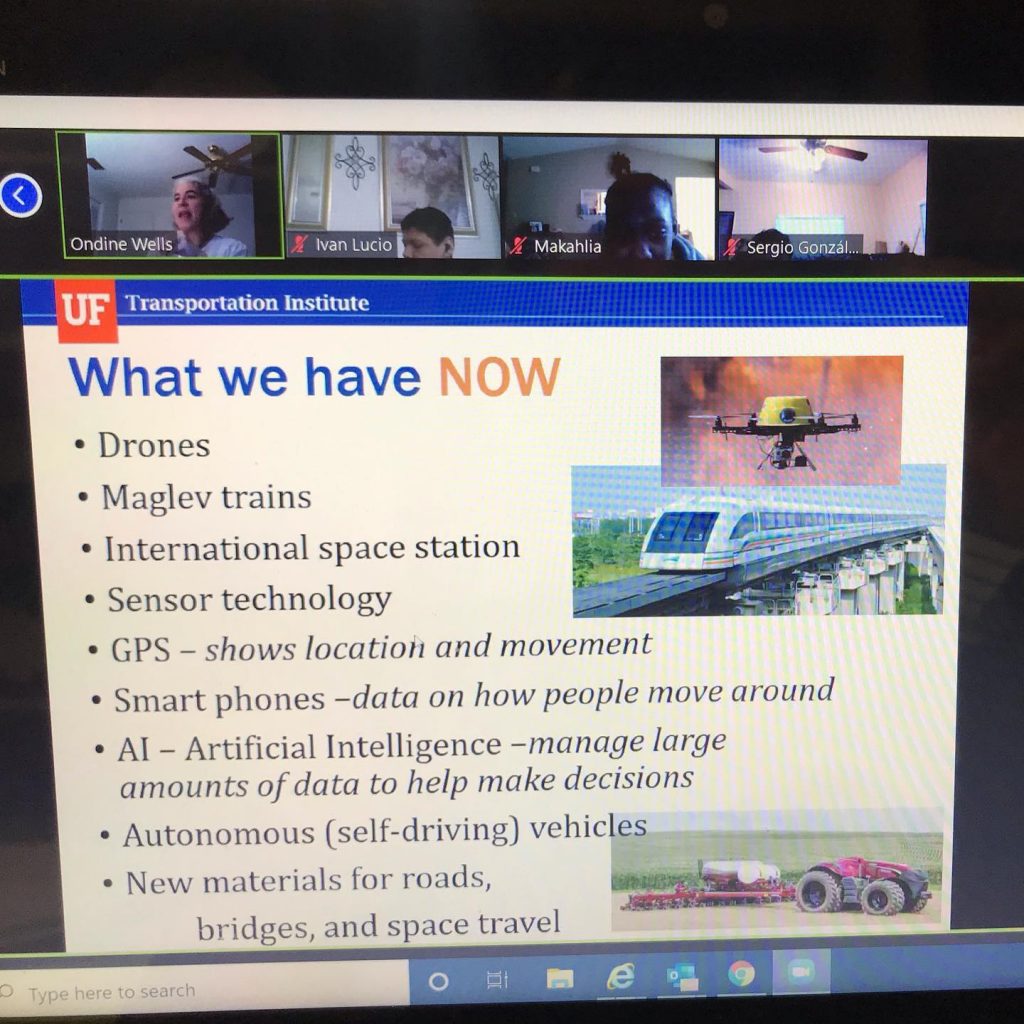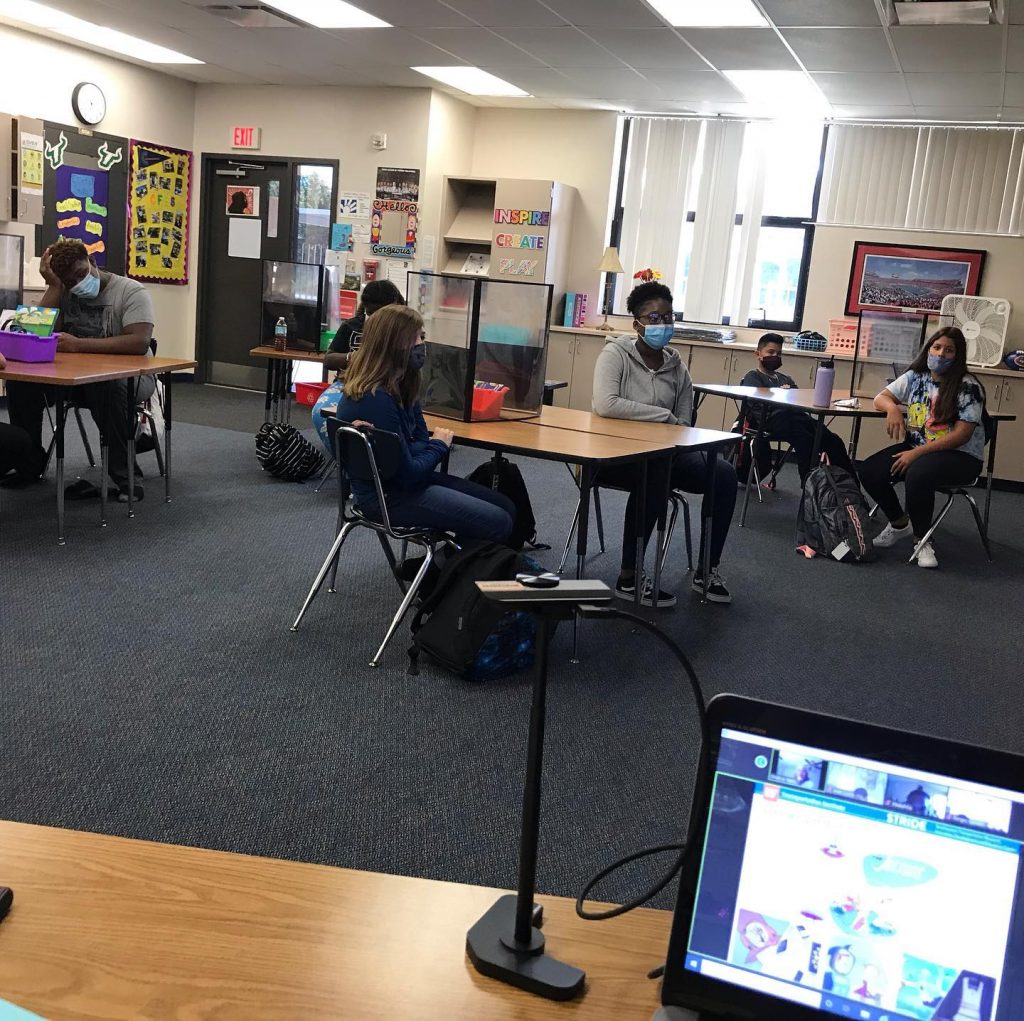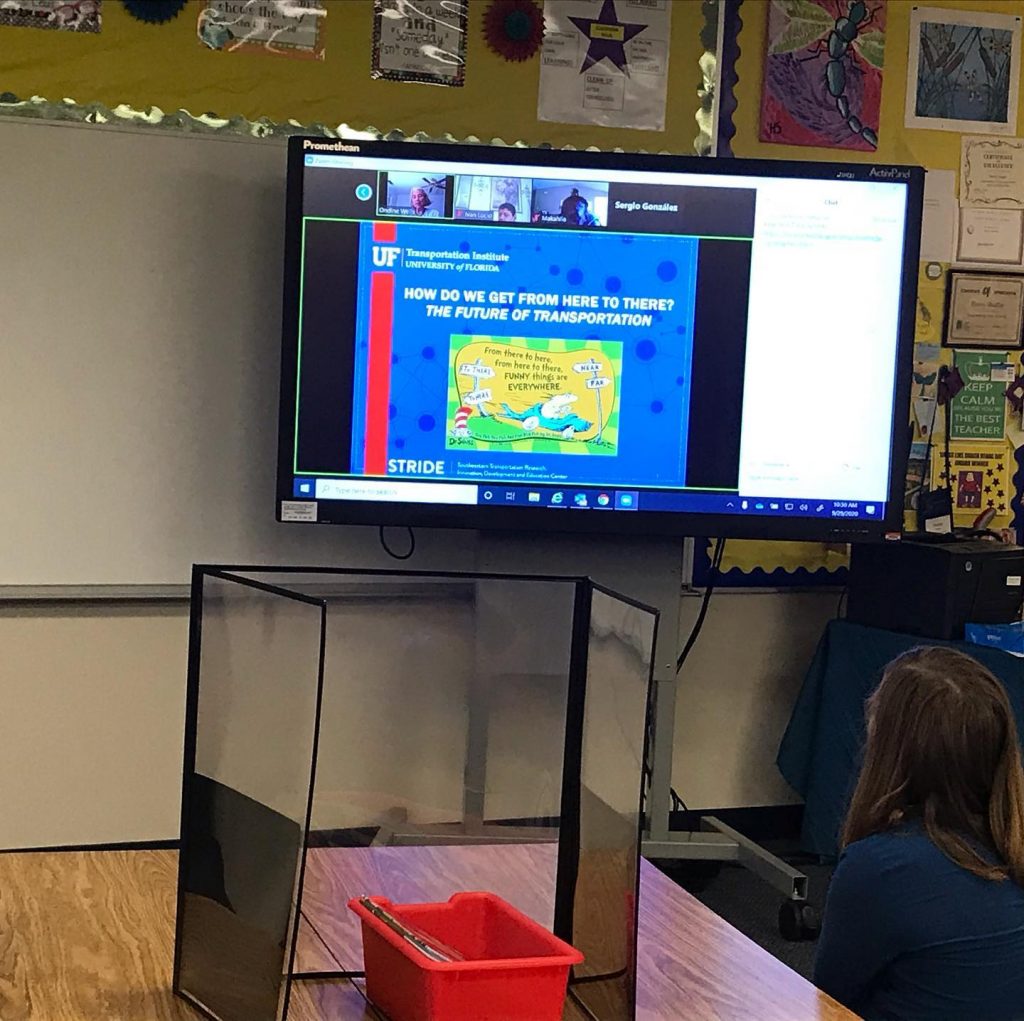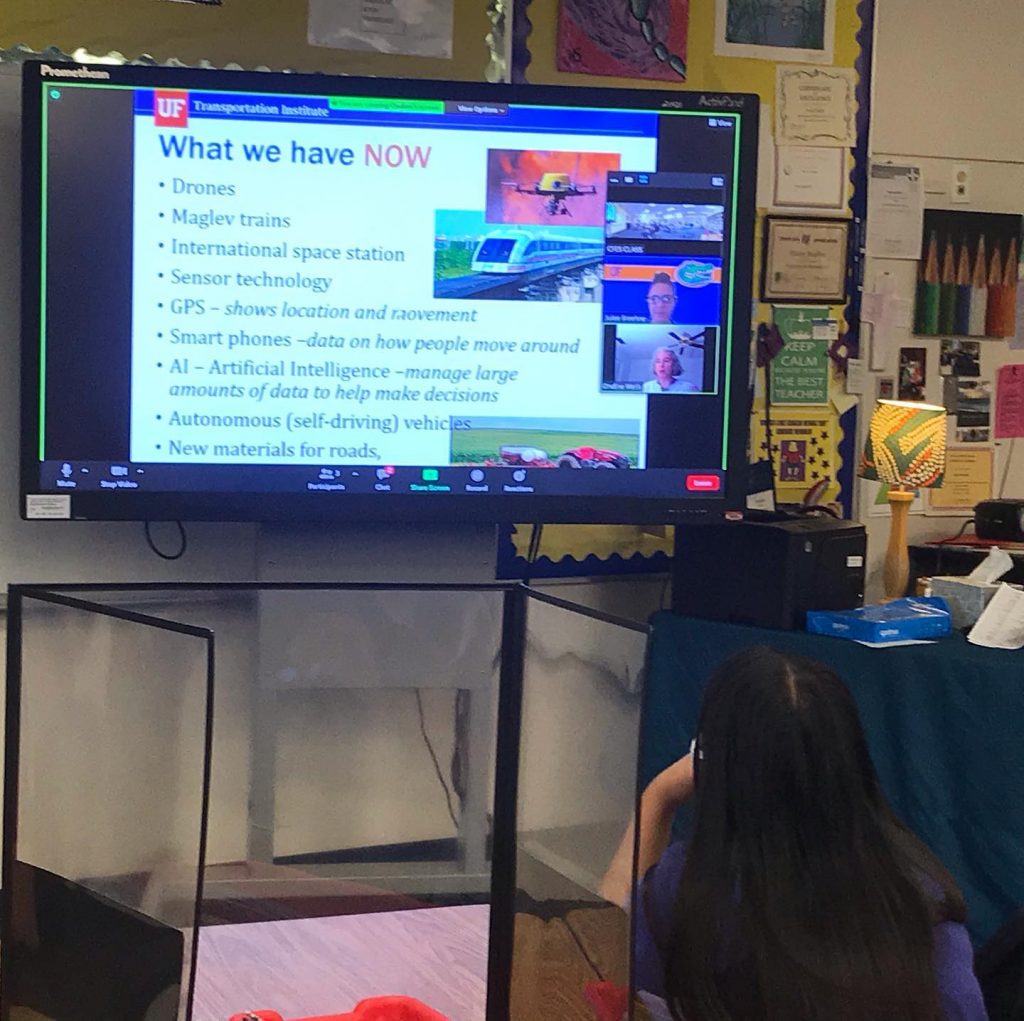The Southeastern Transportation Research, Innovation, Development, and Education (STRIDE) Center teamed up with Julee Breehne, K-12 Coordinator at Herbert Wertheim College of Engineering’s UF Innovation Station in Sarasota County, to introduce students at Booker Middle School in Sarasota County to transportation engineering.
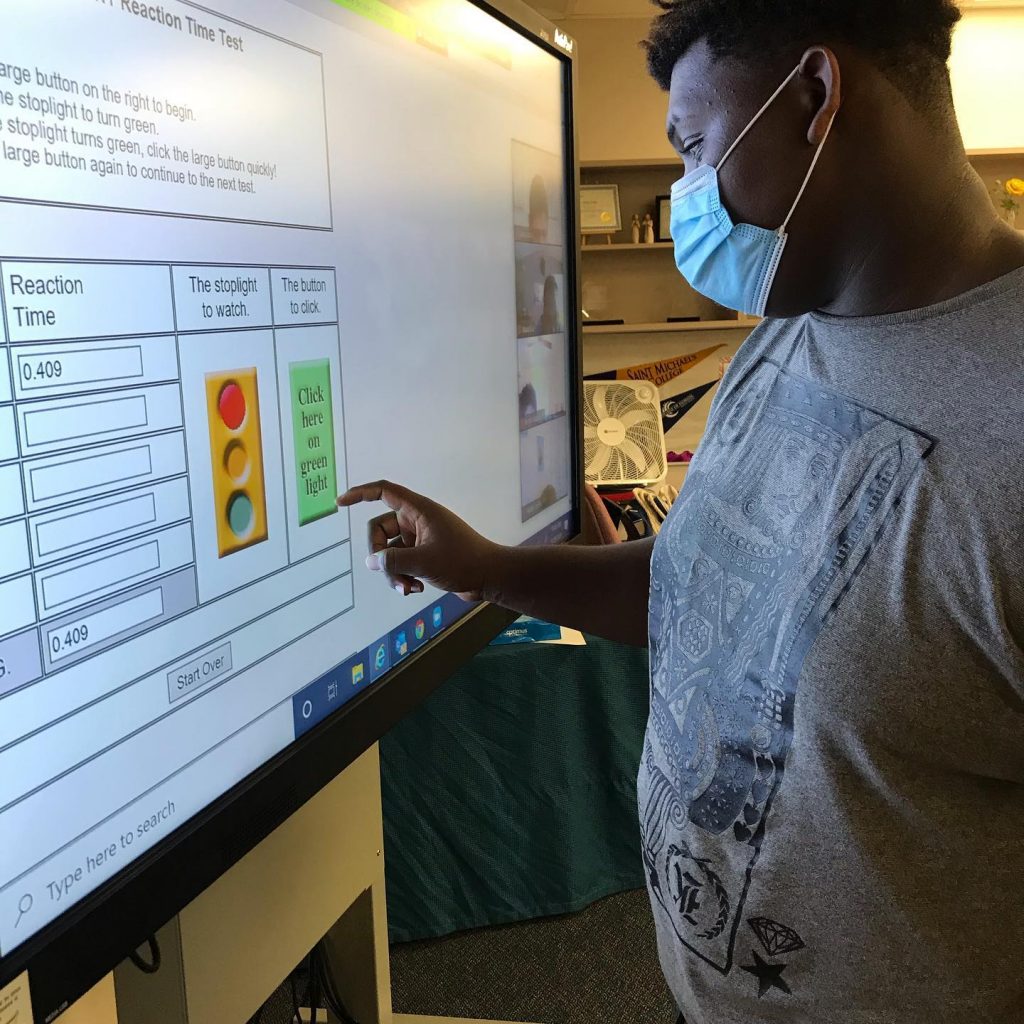
STRIDE K-12 Coordinator Ondine Wells and Breehne met with 6th, 7th, and 8th grade students in the Brilliant Pathways College for Every Student class on September 29th via Zoom. Students learned how transportation technologies have advanced over the years and brainstormed what the future of transportation might look like. Students participated in an activity where they tested their reaction time and learned how this simple, but important measurement is used to make transportation systems safer.
“The hands-on reaction time activity was a good exercise for students,” said Haley Shaffer, a teacher at Booker Middle School. “It helped them to better understand the distractions and challenges a driver faces, and how technology could boost safety.”
Recent UF research into the safety and efficacy of newly developed transportation apps was highlighted, and students shared their own thoughts on the challenges of making new technologies such as apps and autonomous vehicles safe. Interestingly, when all three grade levels were asked whether they would feel safer in a vehicle operating autonomously or driven by a person, the large majority agreed they would prefer a human driver. Developing the technology is one thing, but the new generation of young drivers will need experiences like this and exposure to the science behind the technology if they are to trust in its benefits and safety.
Students discovered how our transportation future will need professionals from many different specialties, such as computer science, mechanical, civil, and transportation engineering as well as urban planning, communications, and behavioral science.
View images from the event below.
